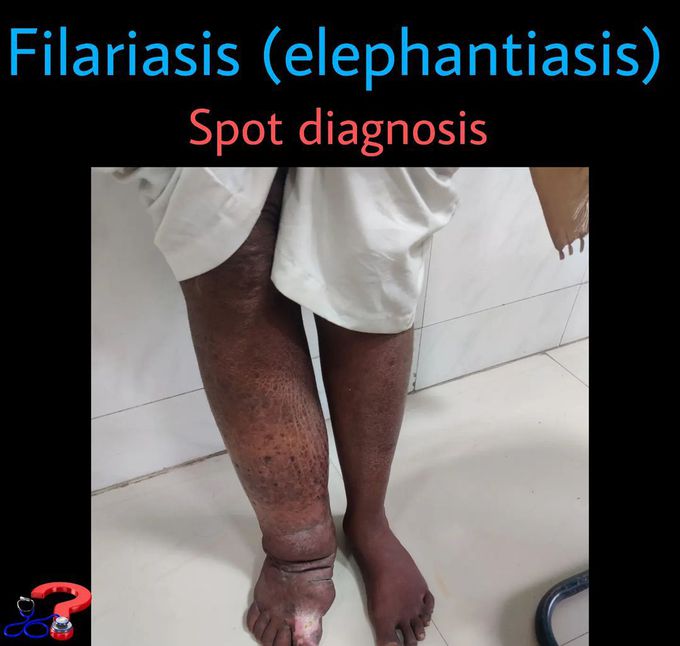


Filiariasis
It is a disease caused by a chronic mosquito-borne parasitic infection which lead to swelling of the extremities, hydroceles, and testicular masses. ✅Lymphatic filariasis is currently considered a neglected tropical disease. ⏩It is caused by at least three species of nematode parasites (Wuchereria bancrofti, Brugia malayi, and Brugia timori) and is transmitted to 5 genera of mosquitoes including Aedes, Anopheles, Culex, Mansonia, and Ochlerotatus. ✅Humans are the primary reservoir for this parasitic disease, and mosquitoes are the vector. ✅The mosquito deposits larvae into the bloodstream. They take up residence in the lymph nodes and grow into adult worms. ✅The larvae have a predilection to deposit in femoral lymph nodes. ✅They undergo sexual reproduction, and females give birth to countless microfilariae, which are dumped into circulation in a diurnal pattern. ✅Females can give off eggs for approximately 5 years, and adults can live up to 9 years. ✅With the proliferation of adult worms, the lymphatics become occluded, which disrupts the lymphatic drainage and increases the susceptibility to repeated infections - most notably streptococcal and fungal infections. ✅This acute-on-chronic inflammation leads to fibrosis and remodeling of the lymphatics, further perpetuating contractile dysfunction and leading to the dermal skin changes seen with elephantiasis. ✅The most common condition of filariasis is a hydrocele. ✅Children are often asymptomatic and typically present after the onset of puberty and likely into the 2nd or 3rd decade of life.
Source: https://www.instagram.com/p/CcvMFZTB1Xn/?igshid=YmMyMTA2M2Y=
